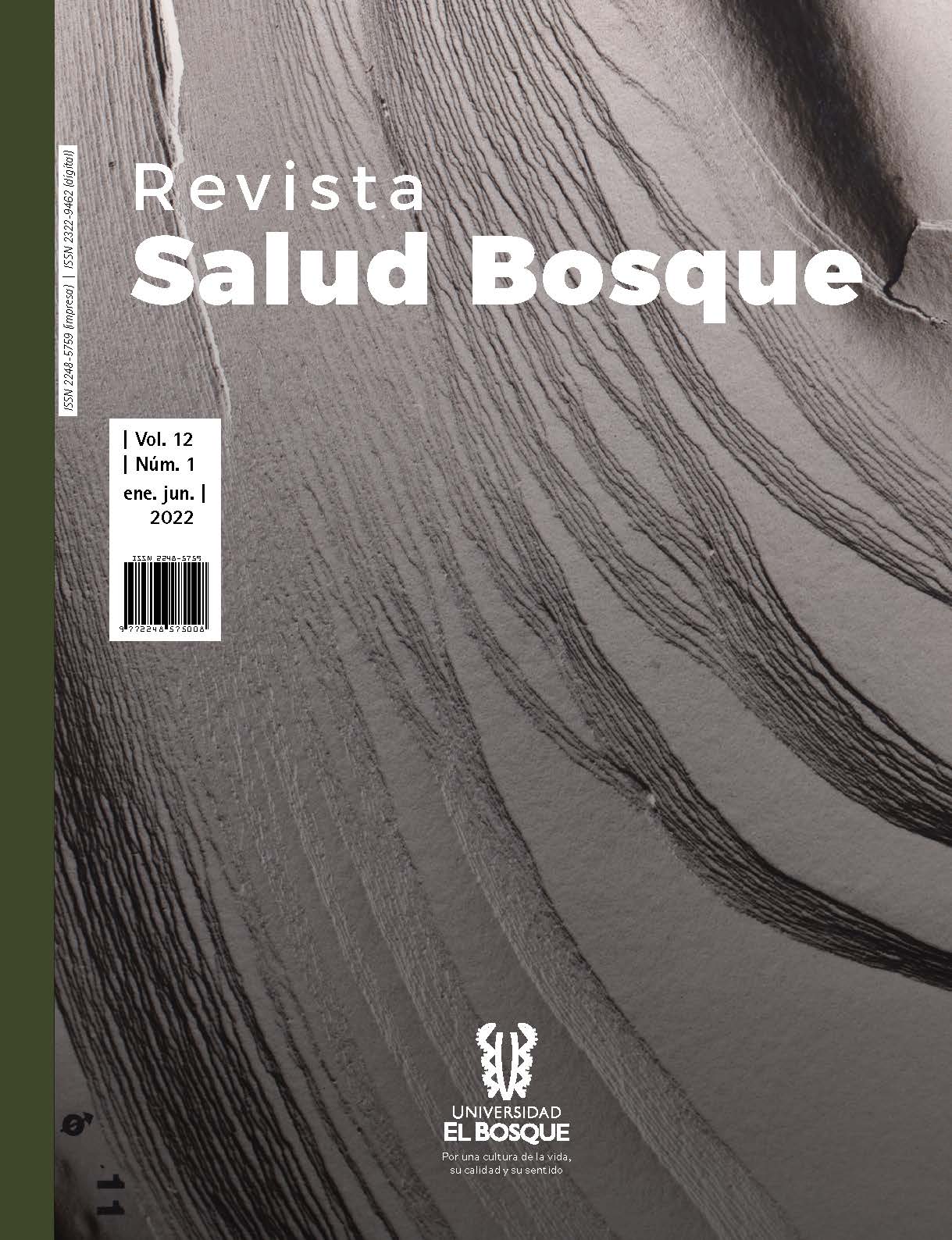Dengue Fever
The Need of a Sustained and Integrated Epidemiological Surveillance Approach
DOI:
https://doi.org/10.18270/rsb.v12i1.4128Keywords:
Colombia, dengue, dengue outbreaks, dengue fever, dengue hemorrhagic, fever, active surveillance system, passive surveillance system, epidemiological surveillance system, integrated epidemiological surveillance systemAbstract
This paper provides an updated review of the dengue situation in the Latin-American countries, focusing on Colombia as a highly and historically affected nation. In first instance, it presents a scientific overview about the biology, clinical progress, transmission mode and epidemiology of the disease. Secondly, it describes the different outbreaks in the region during the past five decades. Thirdly, as an illustration of historical trends in most provinces and Colombian territories, early detection and predictive value of a dengue epidemic is inadequate and how a surveillance system should work. Based on these, the document proposes to provide a framework for a pilot model of a sustained and integrated epidemiological surveillance system in Colombia, focused on early detection, prediction (turning point) of outbreaks and recommendation of a model to be implemented by the Colombian local health units of each affected territory.
It emphasizes that a vector-borne disease such as dengue must be addressed locally, having the individual, all the way through a primary health care and population-based approach, at the center of the system. It also highlights a new approach for returning to the basics in primary health attention in which the community health promoter be again one of the main participants. The paper concludes that without a primary health care approach, particularly under the existing decentralized local and regional governments, it will be so difficult to achieve real control over this kind of cyclical public health issues.
Downloads
References
Halstead SB. Pathogenesis of dengue: challenges to molecular biology. Science. 1988; 239(4839):476-81.
DOI: 10.1126/science.3277268.
Henchal EA, Putnak JR. The dengue viruses. Clin Microbiol Rev. 1990;3(4):376-96. DOI: 10.1128/CMR.3.4.376.
Gubler DJ. Dengue and dengue hemorrhagic fever. Clin Microbiol Rev. 1998; 11(3):480-96. DOI: 10.1128/CMR.11.3.480.
Rodenhuis-Zybert IA, Wilschut J, Smit JM. Dengue virus life cycle: viral and host factors modulating
infectivity. Cell Mol Life Sci. 2010; 67(16):2773-86. DOI: 10.1007/s00018-010-0357-z.
Fauci A, Braunwald E, Kasper D, Hauser S, Longo D, Jameson J, Loscalzo J. Harrison’s Principle of Internal Medicine.17th ed. NY:McGraw-Hill Medical; 2008.
Mustafa MS, Rasotgi V, Jain S, Gupta V. Discovery of fifth serotype of dengue virus (DENV-5): A new public health dilemma in dengue control. Med J Armed Forces India. 2015;71(1):67-70. DOI: 10.1016/j.mjafi.2014.09.011.
World Health Organization [Web site] *. Geneva, Switzerland: WHO, 10 January 2022. Dengue
and severe dengue Fact Sheet. https://www.who.int/news-room/fact-sheets/detail/dengue-and-severe-dengue
Center for Disease Control (CDC). Dengue: Statistics and Maps [online database] *. Atlanta: Centers for Disease Control and Prevention, National Center for Emerging and Zoonotic Infectious Diseases (NCEZID), Division of Vector-Borne Diseases (DVBD) (Retrieved May 22, 2020) http://www.cdc.gov/dengue/epidemiology/index.html
Olliaro P, Fouque F, Kroeger A, Bowman L, Velayudhan R, Santelli AC, Garcia D, Skewes Ramm R, Sulaiman LH, Tejeda GS, Morales FC, Gozzer E, Garrido CB, Quang LC, Gutierrez G, Yadon ZE, Runge-Ranzinger S. Improved tools and strategies for the prevention and control of arboviral diseases: A research-to-policy forum. PLoS Negl Trop Dis. 2018; 12(2):e0005967. DOI: 10.1371/journal.pntd.000596
Campbell LP, Luther C, Moo-Llanes D, Ramsey JM, Danis-Lozano R, Peterson AT. Climate change influences on global distributions of dengue and chikungunya virus vectors. Philos Trans R Soc Lond B Biol Sci. 2015;370(1665):20140135. DOI: 10.1098/rstb.2014.0135
Semenza JC, Sudre B, Miniota J, Rossi M, Hu W, Kossowsky D, Suk JE, Van Bortel W, Khan K. International dispersal of dengue through air travel: importation risk for Europe. PLoS Negl Trop Dis. 2014;8(12):e3278. DOI: 10.1371/journal.pntd.0003278.
Brady OJ, Gething PW, Bhatt S, Messina JP, Brownstein JS, Hoen AG, Moyes CL, Farlow AW, Scott TW, Hay SI. Refining the global spatial limits of dengue virus transmission by evidence-based consensus. PLoS Negl Trop Dis. 2012;6(8):e1760.
DOI: 10.1371/journal.pntd.0001760.
World Health Organization [Website]*. Geneva, Switzerland: WHO, 2011. Dengue and sever dengue in Health Topics.https://www.who.int/health-topics/dengue-and-severe-dengue#tab=tab_1
World Health Organization [Website]*. Geneva, Switzerland: WHO, 2020 Dengue and dengue
hemorrhagic fever fact sheet 117. http://www.who.int/mediacentre/factsheets/fs117/en/
Instituto Nacional de Salud [Website]*. Colombia: National surveillance system in public health. SIVIGILA, May 2020. Morbidity and Mortality Weekly Report. http://www.ins.gov.co/Noticias/Paginas/Dengue.aspx
Pan American Health Organization (PAHO) [Website]*. Washington, D.C: PLISA Health Information Platform for the Americas, 2020. Dengue. https://www.paho.org/data/index.php/en/mnu-topics/indicadores-dengue-en.html
Vincenti-Gonzalez MF, Tami A, Lizarazo EF, Grillet ME. ENSO-driven climate variability promotes periodic major outbreaks of dengue in Venezuela. Sci Rep. 2018; 8(1):5727. DOI: 10.1038/s41598-018-24003-z.
Hoop M, Foley J. Worldwide fluctuations in dengue fever cases related to climate change. Clim
Res. 2003; 25:85-94. DOI:10.3354/cr025085
Guzman MG, Kouri G. Dengue and dengue hemorrhagic fever in the Americas: lessons and
challenges. J Clin Virol. 2003;27(1):1-13.
DOI: 10.1016/s1386-6532(03)00010-6.
Méndez F, Barreto M, Arias JF, Rengifo G, Muñoz J, Burbano ME, Parra B. Human and mosquito infections by dengue viruses during and after epidemics in a dengue-endemic region of Colombia. Am J Trop Med Hyg. 2006;74(4):678-83.
Zambrano-Hernández C del P. Protocolo de Vigilancia en Salud pública de Dengue. Colombia: Grupo de Vigilancia y Control de enfermedades transmisibles endoepidémicas y relacionadas con salud sexual- Instituto Nacional de Salud; 2022. Código 210-220-580-Versión 4. https://www.ins.gov.co/buscador-eventos/Lineamientos/Pro_Dengue.pdf
Castrillón JC, Castaño JC, Silvio U. Dengue en Colombia: diez años de evolución. Rev Chilena Infectol. 2015; 32(2):142-9. http://dx.doi.org/10.4067/S0716-10182015000300002
San Martín JL, Brathwaite O, Zambrano B, Solórzano JO, Bouckenooghe A, Dayan GH, Guzmán MG. The epidemiology of dengue in the americas over the last three decades: a worrisome reality. Am J Trop Med Hyg. 2010;82(1):128-35.
DOI: 10.4269/ajtmh.2010.09-0346.
Padilla JC, Lizarazo FE, Murillo OL, Mendigaña FA, Pachón E, Vera MJ. Transmission scenarios
of major vector-borne diseases in Colombia, 1990-2016. Biomedica. 2017;37(Suppl. 2):27-40.
DOI: 10.7705/biomedica.v37i0.3769.
Beatty ME, Stone A, Fitzsimons DW, Hanna JN, Lam SK, Vong S, Guzman MG, Mendez-Galvan JF, Halstead SB, Letson GW, Kuritsky J, Mahoney R, Margolis HS; Asia-Pacific and Americas Dengue Prevention Boards Surveillance Working Group. Best practices in dengue surveillance: a report fromthe Asia-Pacific and Americas Dengue Prevention Boards. PLoS Negl Trop Dis. 2010;4(11): e890.
DOI: 10.1371/journal.pntd.0000890.26.
Runge-Ranzinger S, McCall PJ, Kroeger A, Horstick O. Dengue disease surveillance: an updated systematic literature review. TropMedIntHealth. 2014;19(9):1116-60. DOI:10.1111/tmi.12333
Zambrano-Hernández C del P. Protocolo de Vigilancia en Salud pública – Dengue. Colombia: Grupo de enfermedades transmisibles Dirección de Vigilancia y Análisis de Riesgo en Salud Pública- instituto Nacional de Salud; 2017. Código 210-220-580-Versión 2.
https://www.ins.gov.co/Noticias/Dengue/7.%20Dengue%20PROTOCOLO.pdf
Rodríguez-Villamizar LA, Ruiz-Rodríguez M, Acosta-Ramírez N. Evaluación de un modelo de atención primaria en salud en Santander, Colombia. Rev. Fac. Nac. Salud Pública 2016; 34(1): 88-95. DOI: 10.17533/udea.rfnsp.v34n1a11
World Health Organization and the United Nations Children’s Fund (UNICEF). Operational framework for primary health care: transforming vision into action. Geneva: 2020. https://www.who.int/publications/i/item/9789240017832
Zuluaga-Salazar SM, Otálvaro-Castro GJ. Las promotoras rurales de salud: una práctica social en extinción. Estudio de caso en el municipio de Andes, Antioquia, 1976-2015. Rev. Ger. Pol. Sal. 2020;19: 1-25. DOI https://doi.org/10.11144/Javeriana.rgps19.prsp
World and Pan-American Health Organization. Actualización Epidemiológica Dengue, chikunguña y Zika en el contexto de COVID-19 [online database] *. Washington DC: Pan-American Health Organization; 23 de diciembre de 2021 [citado el 16 de febrero de 2022].
Scientific Working Group. Report of the Scientific Working Group meeting on Dengue. Geneva, Switzerland: Special Programme for Research and Training in Tropical Diseases; 2006. TDR/SWG/08. Sponsored by UNICEF/UNDP/World Bank/WHO.
https://apps.who.int/iris/handle/10665/69787
Faguet, JP., Sánchez, F. Decentralization and access to social services in Colombia. Public Choice. Public Choice. 2014; 160: 227-49.
DOI: https://doi.org/10.1007/s11127-013-0077-7
World Health Organization. Dengue guidelines for diagnosis, treatment, prevention and control,
new edition. Geneva, Switzerland: WHO; 2009. https://apps.who.int/iris/handle/10665/44188
San Martín JL, Brathwaite-Dick O. [Integrated strategy for dengue prevention and control in the Region of the Americas]. Rev Panam Salud Publica. 2007 Jan;21(1):55-63. Spanish. DOI: 10.1590/s1020-49892007000100011.
Special Program for Research and Training in Tropical Diseases-TDR.Technical handbook for dengue surveillance, outbreak prediction/detection and outbreak response. Geneva Switzerland: TDR/World Health Organization, 2016.
https://www.who.int/publications/i/item/9789241549738
Lloyd, LS. Environmental health project: best practices for dengue prevention and control in the Americas-Strategic report / EHP. Washington DC: Environmental Health Project; 2003. Strategic Report 7.
World Health Organization. Meeting on Dengue. Epidemiological trend and disease burden. Geneva Switzerland: World Health Organization; 2006. Report of the Scientific Working group (Annex 3).
Villar LA, Rojas DP, Besada-Lombana S, Sarti E. Epidemiological trends of dengue disease in Colombia (2000-2011): a systematic review. PLoS Negl Trop Dis. 2015; 9(3):e0003499. DOI: 10.1371/journal.pntd.0003499.
Rodríguez-Reyes AJ, González-Ruge D, Pardo-Herrera LC. Informe de evento dengue, Colombia, 2020. Colombia: Instituto Nacional de salud; 20202. FOR-R02.4000-001- Versión 4 https://www.ins.gov.co/buscador-eventos/Informesdeevento/DENGUE_2020.pdf
World Health Organization, Regional Office for South-East Asia. Guidelines for treatment of dengue fever/dengue haemorrhagic fever in small hospitals. New Delhi: WHO Regional Office for South-East Asia; 1999. https://apps.who.int/iris/handle/10665/205177
Ocazionez RE, Cortés F, Villar LA. Vigilancia del dengue basada en el laboratorio: diferencias en el número de casos y virus aislados según la recolección del suero y la prueba serológica. cm. 2005;36(2):65-2.
World Health Organization, Western Pacific Region. Dengue clinical management: facilitator’s training manual. Manila, Philippines: World Health Organization, Western Pacific Region; 2013. https://www.who.int/publications/i/item/9789290616221
World Health Organization. Regional Office for South-East Asia. Comprehensive Guideline for Prevention and Control of Dengue and Dengue Haemorrhagic Fever. Revised and expanded edition. New Delhi: WHO- Regional Office for South-East Asia; 2011. NLM classification: WC 528. https://apps.who.int/iris/handle/10665/204894
Williams CR, Azil AH Ritchie SA. Should we bother doing dengue vector surveillance, and if so, how should we do it?. Int. J. Pub. Health Res. 2019; 9(2):1135-9.
World Health Organization. Global strategy for dengue prevention and control, 2012–2020. Geneva Switzerland: World Health Organization; 2012. https://apps.who.int/iris/bitstream/handle/10665/75303/9789241504034_eng.pdf
Johansson MA, Cummings DA, Glass GE. Multiyear climate variability and dengue--El Niño southern oscillation, weather, and dengue incidence in Puerto Rico, Mexico, and Thailand: a longitudinal data analysis. PLoS Med. 2009; 6(11): e1000168.
DOI: 10.1371/journal.pmed.1000168.
Ministerio de Salud y de Protección Social [Website]. Rutas integrales de atención en salud (RIAS). Colombia: Ministerio de Salud y de Protección Social;2016. https://www.minsalud.gov.co/Paginas/rutas-integrales-de-atencion-en-salud.aspx
Colombian Ministry of Health and Social Protection, National Institute o f Health, Pan-American Health Organization. Dirección General de Salud Pública Grupo Salud Ambiental Enfermedades Transmitidas por Vectores.
Ministerio de Protección Social - Instituto Nacional de Salud. Organización Panamericana de la Salud. Gestión para la Vigilancia Entomológica y Control de la Transmisión de Dengue. Colombia: Dirección general de salud pública grupo salud ambiental enfermedades transmitidas por vectores- Ministeriode Protección Social - Instituto Nacional de Salud. Organización Panamericana de la Salud. https://www.paho.org/col/dmdocuments/Entomologia_DENGUE.pdf
Zuluaga-Salazar SM, Otálvaro-Castro GJ. Las promotoras rurales de salud: una práctica social en extinción. Estudio de caso en el municipio de Andes, Antioquia, 1976-2015. Rev. Ger. Pol. Sal. 2020;19: 1-25. DOI https://doi.org/10.11144/Javeriana.rgps19.prsp
Downloads
Published
How to Cite
Issue
Section
License
Copyright (c) 2023 Universidad El Bosque

This work is licensed under a Creative Commons Attribution-NonCommercial 4.0 International License.
The authors will submit a statement attesting to the authenticity of the material, attaching signature and id number. It is also required that they submit a statement surrendering economic rights to El Bosque University










